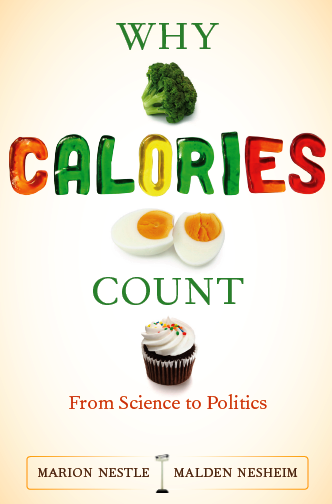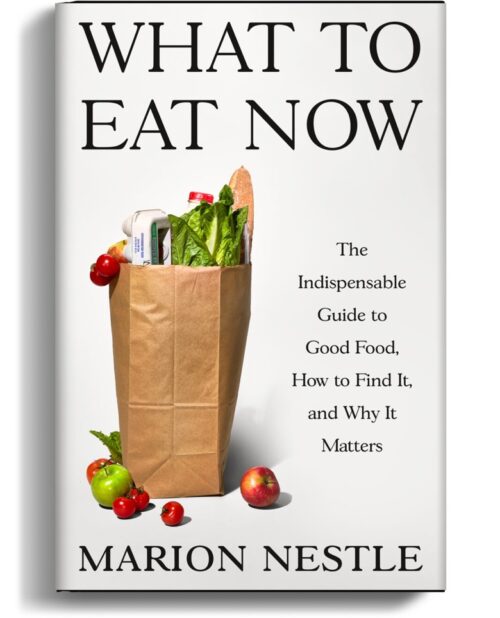USA Today interview on Why Calories Count
USA Today’s Nanci Hellmich interviewed me and my co-author, Malden Nesheim, about Why Calories Count:
When it comes to calories, some people count them, others are confused by them and some just ignore them. Marion Nestle, a nutrition professor at New York University, and Malden Nesheim, professor emeritus of nutritional sciences at Cornell University, look at the topic in Why Calories Count: From Science to Politics. USA TODAY’s Nanci Hellmich talked to them about the new book.
Q: Why do women in general need fewer calories than men?
A: Women are smaller and generally have a higher body fat content than men. Fatty tissue needs less energy to maintain than does muscle mass. Pregnancy and breast-feeding increase women’s calorie needs.
Q: Why do some people have an easier time maintaining a healthy weight than others? How many calories are used by basal metabolism?
A: Genetics has plenty to do with body weight and some people seem to be able to eat vast amounts of food without gaining weight. About two-thirds the calories we need go for basal metabolism — the amount of energy needed to support basic body functions like breathing, blood circulation, kidney function, etc. The rest primarily supports physical activity. So if you want to lose weight, you have to eat less or move a lot more.
Q: Why does energy expenditure decline as much as 20% by age 50 and 30% by age 71 and older?
A: This, in our opinion, is one of life’s great tragedies. Basal metabolism drops with age and so does muscle mass. Lots of people are less physically active when they get older. Staying active does lots of good things for health and one of them is compensating for the decline in calorie needs.
Q: Are all calories created equal when it comes to weight loss?
A: If you lock people in a metabolic ward and feed them the same number of calories in reduced-calorie diets that vary in fat and carbohydrates (all measured), you can show that they lose weight at the same rate regardless of diet composition. The number of calories determines how fast they lose, nothing else.
In the real world, some people lose weight faster on low-carbohydrate, high-fat diets, such as the Atkins diet, especially at the beginning when they excrete so much water. Some people find that low-carbohydrate diets make it easier to reduce calories and stay satiated. And it’s always a good idea to cut back on desserts and sodas.
Q: Do excess calories make some people gain weight faster than others?
A: Here’s where genetics comes in. In controlled studies of overfeeding, everyone gains weight when they eat more calories than they expend, but at different rates. Some people can overeat and gain only a little weight — growing teenage boys are a good example. They may spontaneously increase their physical activity to burn off excess calories. Other people easily store more of the extra calories as fat.
Q: What is your best advice to people who want to lose weight?
A. Our mantra is: Get organized; eat less; eat better; move more; get political. By get political, we mean work to change the food environment to one that makes it easier to eat healthfully: Support labeling laws and nutrition education; stop advertising to children; support agricultural policies that encourage consumption of fruits and vegetables, local food systems, and environments that encourage physical activity.
Q: What do calories have to do with politics?
A: How much food people eat — and whether they are malnourished or overweight — is affected by income, education, and, therefore, the political system. Many companies and vested-interest groups have a stake in how calories are marketed, perceived, labeled, and promoted, not least because eating less is bad for business.
Efforts to do something about obesity in adults and children focus on eating less or on eating better, meaning more fruits, vegetables, and grains but consuming less of sodas, fast food, snacks, and other highly profitable items.
Such matters as soda taxes, listing calories on food labels or menu boards, or campaigns to promote smaller portions are all political responses to concerns about calorie consumption. For years, consumer groups have pushed for calorie and nutrition labeling on alcoholic beverages, but the Treasury Department (not the FDA) regulates such things and responds to the wishes of the industry.



